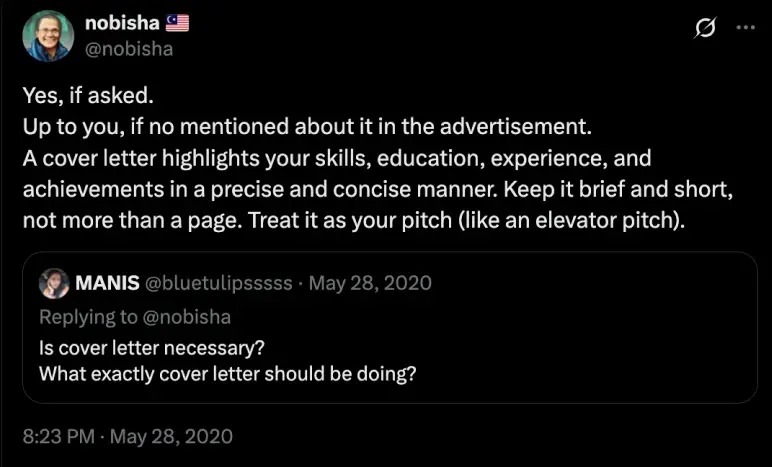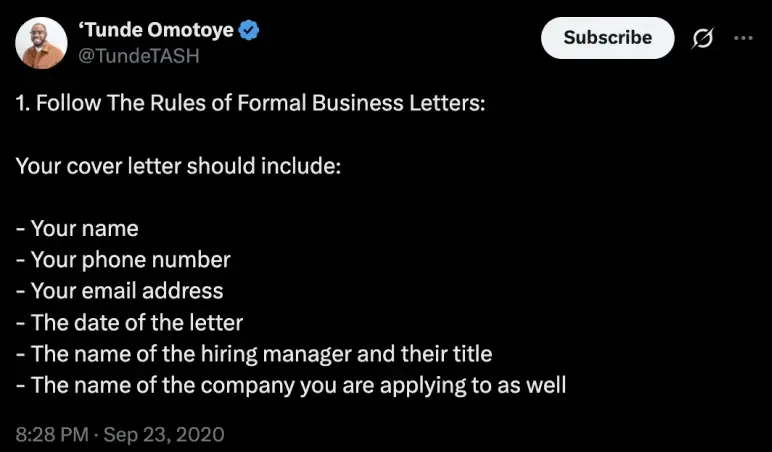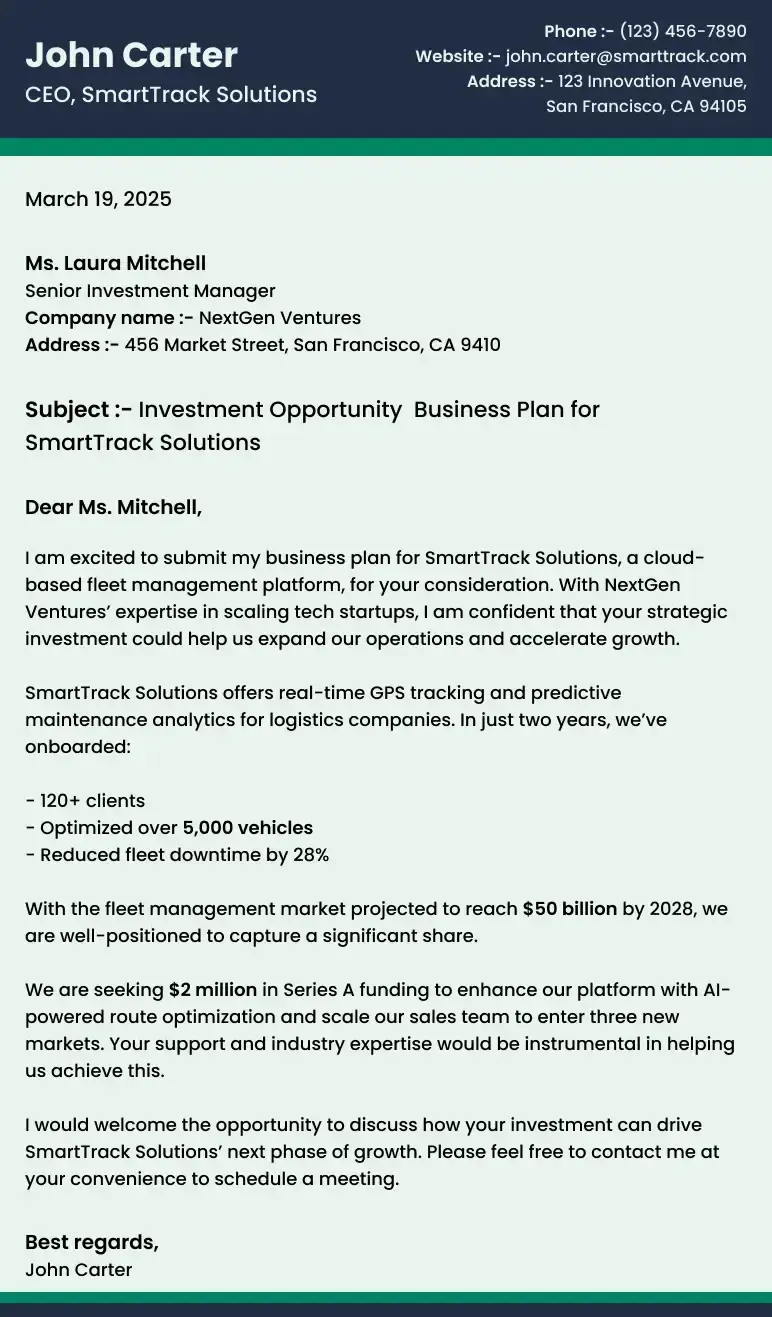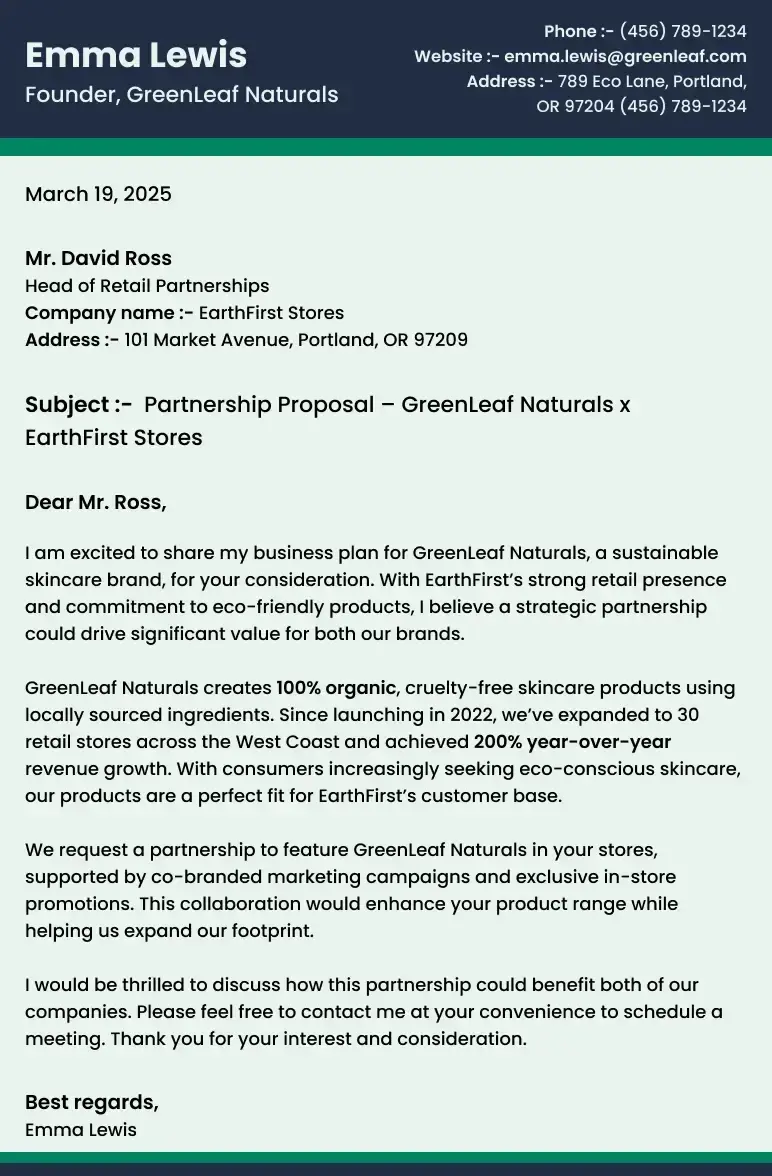"Letters are expectations packed in an envelope." – Shana Alexander.
Think of your business plan cover letter the same way—it carries the hopes, vision, and potential of your business, all on a single page. It’s your first chance to connect with investors and convince them that your plan is worth their time.
But how do you write a cover letter for a business plan?
Well, worry not! In this blog, we’ll help you with the step-by-step process to write a compelling business plan cover letter, share examples, and provide sample letters to help you create one that grabs attention.
Let’s get started!
What is a business plan cover letter?
A business plan cover letter is a formal document that gives a quick glimpse of what your business is about and explains why you’re reaching out to them. It’s the first thing an investor, lender, or partner will see before opening your business plan.
A business cover letter formally includes:
- Name and address of your organization
- The recipient’s details
- Your purpose for writing a cover letter
- A Brief business overview
- Highlight why your business is worth their time and investment.
- CTA
Remember, it should be one page—short, clear, and compelling. The goal is to hook their attention, not overwhelm them.
Do you even need a cover letter with your plan?
After learning about a business plan cover letter, you might wonder, "Do I really need one?”
Remember one thing: Even if investors don’t specifically ask for a cover letter, adding one is a smart move.
It sets the stage, introduces you, and gives context to what’s inside. Without it, your plan can seem abrupt and impersonal—like a book with no author.

Here’s why having a cover letter is worth it:
First impressions matter
Investors are 133.33% more likely to fund companies with well-structured business plans. And before they even dive into your plan, they’ll read your cover letter. If it’s clear, confident, and engaging, you’ve already taken a step ahead of the competition.
Add a personal touch
A cover letter allows you to address the recipient personally. It shows you’ve done your homework by writing to a specific investor or firm, making it feel less generic.
Sets the context
Imagine sending your business plan without any introduction—it could feel random or out of place. A cover letter explains why you’re sending it.
Highlights key points
You can use the cover letter to tease the best parts of your business plan—like a quick mention of your market potential, proven sales, or unique value. It’s your chance to spark interest before they even open the main document.
How to write a business plan cover letter (w/ examples)
Here’s a step-by-step process for writing a formal cover letter for your potential investors, partners, or lenders:

Step 1: Start with the professional heading
A good cover letter is defined by its clarity, tone, and intention, as well as how clean and professional it looks. Hence, your cover letter should have a clean, professional layout with your and the recipient's contact details at the top. This makes it look formal and organized.
For example, start with your name, business name, address details, contact number, and date, followed by the recipient’s name and contact details.

John Carter
Founder, FreshBites
123 Green Street, New York, NY 10001
(123) 456-7890
john.carter@freshbites.com
March 19, 2025
Ms. Laura Mitchell
Senior Investment Manager
NextGen Ventures
456 Market Avenue, New York, NY 10002
Step 2: Greet your audience with a personal salutation
Imagine a business proposal letter that starts with “To whom it may concern" or “I am writing this to" Sounds weird? Isn’t it?
So, whenever possible, address the recipient by name. It feels more personal, grabs attention to detail, and makes them feel respected.
For example,
✔️ "Dear Mr Mitchell," – If you know the recipient’s name.
✔️ "Dear NextGen Ventures Team," – If you’re addressing a company or group.
Here are a few tips to greet your audience:
- For investors, use their title if applicable (e.g., "Dear Mr. Patel, Venture Capitalist"). For a general audience, "Dear [Company Name] Team" works.
- Avoid overused buzzwords or generic intros like “Hope this mail finds you well” or "To Whom It May Concern" unless you have no specific recipient.
- If you’ve previously met or spoken with the recipient, reference that connection subtly in your greeting. "Dear Mr. Lewis, It was a pleasure meeting you at the Startup Expo last month."
Step 3: Write a strong opening with a clear purpose
The opening line is your first impression, and it needs to grab the reader’s attention immediately.
If your first paragraph starts with a weak or vague introduction, you risk losing their interest.
A clear and purposeful opening explains why you’re writing and what you want. Whether it’s
- Funding
- Partnership
- Collaboration
Let’s understand it with an example:
The example clearly defines who they are—FreshBites, a meal-prep service provider.
It also specifies whom they are addressing—Investors with a track record of supporting early-stage food startups. Finally, it highlights the purpose—seeking expertise and financial support to scale into new markets.
Step 4: Introduce your business clearly
It’s crucial to set the context for the reader by introducing your business clearly. Without a clear introduction, the investor or lender won’t know who you are or what your business does. This leaves them guessing, which weakens your first impression.
Moreover, a compelling intro encourages them to dive deeper into your business plan and lets them know what kind of business they’re reviewing.
Here’s how you should introduce your business:
Such an example works because it:
- Clearly states what the business does (meal-prep service).
- Defines the target audience (busy urban professionals).
- Highlights a key achievement (5,000 customers and 70% retention).
Step 5: Highlight why they should care (Your value proposition)
This is your chance to give a tease of the best parts of your business plan—like market potential, production capacity, revenue growth, or a unique solution. Show them why your business is worth their time and investment.
For example:
Step 6: Include a clear call-to-action (CTA)
Tell the recipient what you want next. It’s like keeping your audience engaged with your business. Hence, your CTA should focus on the next move, whether it’s:
- Meeting personally
- Collecting feedback
- Chance to discuss your plan further
This makes your letter action-oriented and encourages the recipient to take the next step
Here’s how your CTA should be:
Step 7: End with a professional closing
Wrap it up with a polite closing and your signature.
Example:
"Thank you for considering FreshBites. I look forward to the possibility of collaborating with you."
Best regards,
John Carter
Founder, FreshBites
Now that you know the steps to crafting a business plan cover letter, it’s time to look at some samples of business proposal cover letters.
Business plan cover letter format
Now, let’s explore a cover letter template to learn the format so you know where and how to include important business aspects:
[Your name]
[Your business name]
[Your business address]
[City, State, and Zip code]
[Telephone number]
[Date]
Recipient’s Name
[Recipient’s job title]
[Recipient’s Address]
[City, State, and Zip code]
Subject: [Write a clear and concise subject line]
Example: Seeking investment for FreshBites for expansion
Dear, [Investor name]
Opening paragraph:
State the purpose of writing the letter clearly and concisely.
- Mention why you’re writing (seeking investment, job search, partnership, or collaboration).
- Add a hook to grab their attention.
Example:
I’m reaching out to present FreshBites, a meal-prep service revolutionizing healthy eating. We’re seeking $250,000 in funding to scale our operations.
Second paragraph:
Introduce your business idea and highlight key details.
- Mention your business name, product offerings, industry, research, and unique value proposition.
- Share relevant achievements or growth metrics.
Example:
FreshBites has grown by 150% in the past year, serving over 10,000 customers. Our unique model offers chef-prepared meals delivered fresh to homes.
Third paragraph
Explain why you’re reaching out and what you expect.
- State the type of support you need (funding, partnership, or collaboration).
- Mention how the recipient can benefit from your organization.
Example:
Your expertise and track record in supporting early-stage food startups make you the perfect fit to help us expand into new markets.
Last paragraph
Clearly state the next step you want the recipient to take.
- Mention if you’re open to a meeting or further discussion.
- Express your availability.
Example:
I’d love the opportunity to discuss our business plan further. Let me know, if we can schedule a meeting at your convenience.
Closing paragraph
Wrap it up with a polite and professional closing statement.
- Express gratitude for their time and consideration.
- End with a professional closing.
Example:
Thank you for your time and consideration. I look forward to the opportunity to collaborate.
Sincerely,
[Your Name]
[Your Job Title]
Following this format will help you craft the perfect cover letter that makes a good impression on potential investors and showcases a good investment opportunity.
Sample business plan cover letters
In this section, we’ll walk through a few good cover letter examples so you can skip the Google research. Whether you need an investment or are sharing a partnership proposal, this business plan cover letter sample will help you understand how to structure and write an effective cover letter.
Example 1: Business Plan Cover Letter for Investors (Tech Startup)
Scenario: Seeking investment from a venture capital firm for a tech startup.

Example 2: Business Plan Cover Letter for Partnership (Eco-Friendly Brand)
Scenario: Proposing a partnership with a major retailer to distribute eco-friendly products.

Need help getting funded?
We hope this article helps you master the art of writing a business plan cover letter. That’s because one small mistake can cost you thousands in missed investment opportunities. So, it’s worth considering expert help from business plan consultants.
We at Plangrowlab have a team of experienced business plan consultants who have crafted cover letters for hundreds of businesses, helping them raise more than $1.2B in funding.
With us, it’s not just about writing a cover letter—we also help you build a solid business plan and create accurate financial projections. Importantly, we also let you connect with SBA lenders from our network to help get funded.
Need help getting funded? Get in touch with our expert today.
Frequently Asked Questions
To whom should I address my business plan cover letter?
Ideally, address it to a specific person who is the investor, lender, or decision-maker. If you don’t know whom to address it to, use the company name or job title like HR, VC, or CEO.
How long should a business plan cover letter be?
The ideal length for a business plan cover letter should be around 300-400 words or approximately one page, consisting of 3-5 paragraphs.
Should I attach supporting documents with my cover letter?
Yes, you should always attach your business plan to the cover letter while approaching investors—it’s the main document they’ll review.
How do I make my cover letter stand out to investors or lenders?
Personalize it, highlight key achievements and market potential, and clearly state how your business venture offers a valuable addition.

